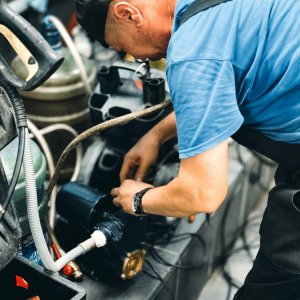
Supply Chain Still Recovering Amid Transformation
 By Antonio Gozain | Senior Journalist and Industry Analyst -
Fri, 03/25/2022 - 11:46
By Antonio Gozain | Senior Journalist and Industry Analyst -
Fri, 03/25/2022 - 11:46
The automotive supply chain has suffered major disruptions, shortages, cost increases and logistics troubles over the past two years. However, while a full recovery is not expected in 2022, the challenging environment that the auto value chain faces has also opened several opportunities, agreed industry experts.
“We are facing an uncertain future but within the uncertainty there are some opportunities. In 2019, we expected a trend toward nearshoring even before the pandemic hit… About 15-20 percent of the US$1.7-trillion global automotive industry was expected to be regionalized, opening opportunities to capitalize on that trend,” said Miguel Alcaraz, Partner, McKinsey & Company Operations Practice Leader.
The automotive sector is experiencing one of the largest transformations in its history as it faces several challenges triggered by the pandemic, such as the high costs of sea freight and raw materials and the semiconductor shortage, said Alberto Bustamante, General Manager, INA.
The crisis began with semiconductors. Although the pandemic worsened the problem, Boston Consulting Group (BCG) already expected that the demand for chips would be 10 percent greater than the supply, said Karen Lellouche, Managing Director & Partner, BCG. “Semiconductors were already an important problem. In 2021, almost 8 million vehicles could not be manufactured due to chip shortages.”
Semiconductor shortages still plague the automotive industry, with OEMs constantly stopping production across the world. In Mexico, the situation has not been different; production and sales figures have hit their lowest levels in the last decade, while exports have not recovered entirely from the pandemic crisis, as reported by MBN.
The semiconductor issue goes beyond the pandemic and is a structural problem, said Carlos Zegarra, Partner at Mexico Management Consulting Leader, PwC Advisory. “COVID-19 only intensified the impact of semiconductor shortages. It was already a problem, with 70-80 percent of the total supply concentrated only in two countries.”
Taiwanese semiconductor manufacturers lead the semiconductor market, representing 65 percent of global revenues. Taiwan Semiconductor Manufacturing Company (TSMC) stands above the rest, with 56 percent of the global revenue and a market cap of around US$550 billion, ranking it as the world’s 11th most valuable company, according to The Wall Street Journal. This position led the publication to refer to the world’s dependency on TSMC as a vulnerability. Semiconductors have also been a focal point of tensions between the US and China, as Taiwan claims the industry “as its own,” according to the newspaper.
During 2021, the US and the EU addressed the shortage by creating several initiatives to attract investment and produce their own chips. The US’s aggressive bill to foster semiconductor development within its borders represents another opportunity for Mexico, said Bustamante. “Our country has volunteered to program the semiconductors that will be manufactured in the US. We have two capable plants, in Jalisco and Mexicali.”
The situation remains complicated for 2022, which will be another challenging year, said Alberto Torrijos, Automotive Sector Leader Partner, Deloitte. The Russia-Ukraine conflict is also increasing the price of oil, gas and commodities, and generating uncertainty and loss of confidence, he added. “It is a challenging year but it can also be the launch pad for a better 2023 or 2024,” said Torrijos.
The Russia-Ukraine conflict has impacted all industries across the world and also laid a direct hit to the automotive sector, said Lellouche: “Ukraine is one of the main producers of neon gas, which is crucial for semiconductor manufacturing.” The region also produces nickel, which is important for EVs, and palladium and platinum, used in ICE vehicles, she added. Russia produces about 30 percent of the world’s palladium, according to Mining.com.
With all the difficulties that the industry has faced, suppliers have still “pulled-out miracles” to meet requirements, said Manuel Montoya, President, Automotive Cluster Network. “In 2021 production was lower than in 2020 and the negative effect works as a chain: when OEMs stop productions, Tier 1s stop productions then Tier 2s. We still hope that components will do better in 2022.”
Day-to-day management and long-term leadership became crucial during these difficult times, said Martín Toscano, President, Evonik Industries de Mexico. Major international players leveraged their global footprint to mitigate the impact of the crisis, taking advantage of their network and most important assets, he added.
The automotive supply chain will continue its transformation as the industry itself does. “We are going toward a supply chain relocation and nearshoring,” said Toscano.
Although some talk about returning to normal and a full recovery, many of the changes that the pandemic brought will stay forever, said Francisco Bautista, Partner, Advance Manufacturing and Mobility Leader LATAM North, EY. “The supply chain has moved to a circular economy. The linear chain is already obsolete. Suppliers must design their products to adapt to this new, sustainable business model.”
















